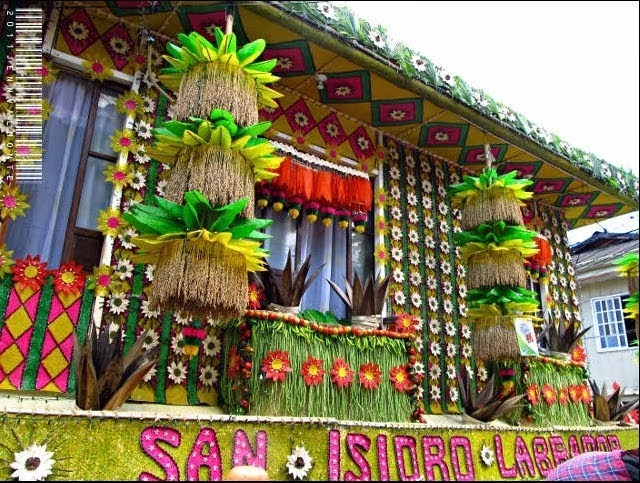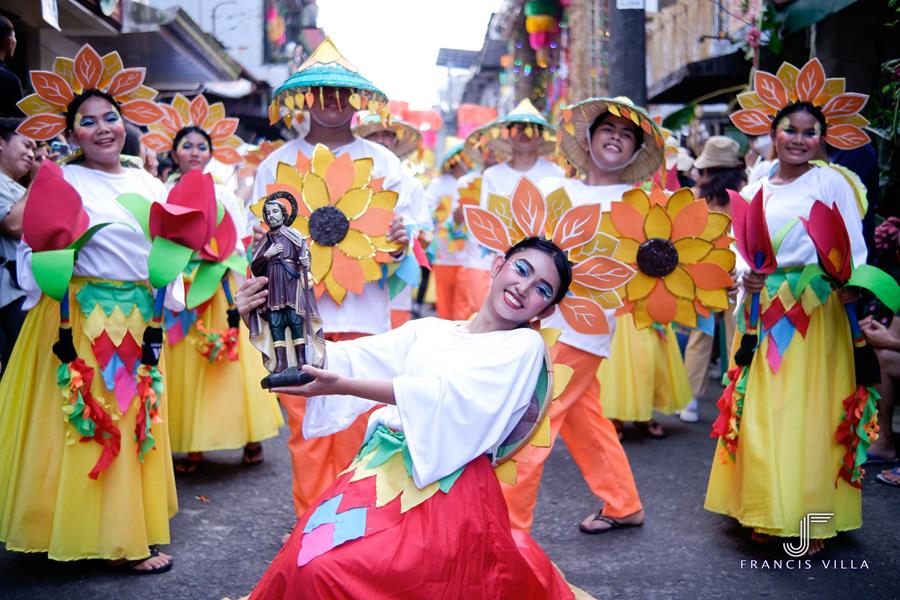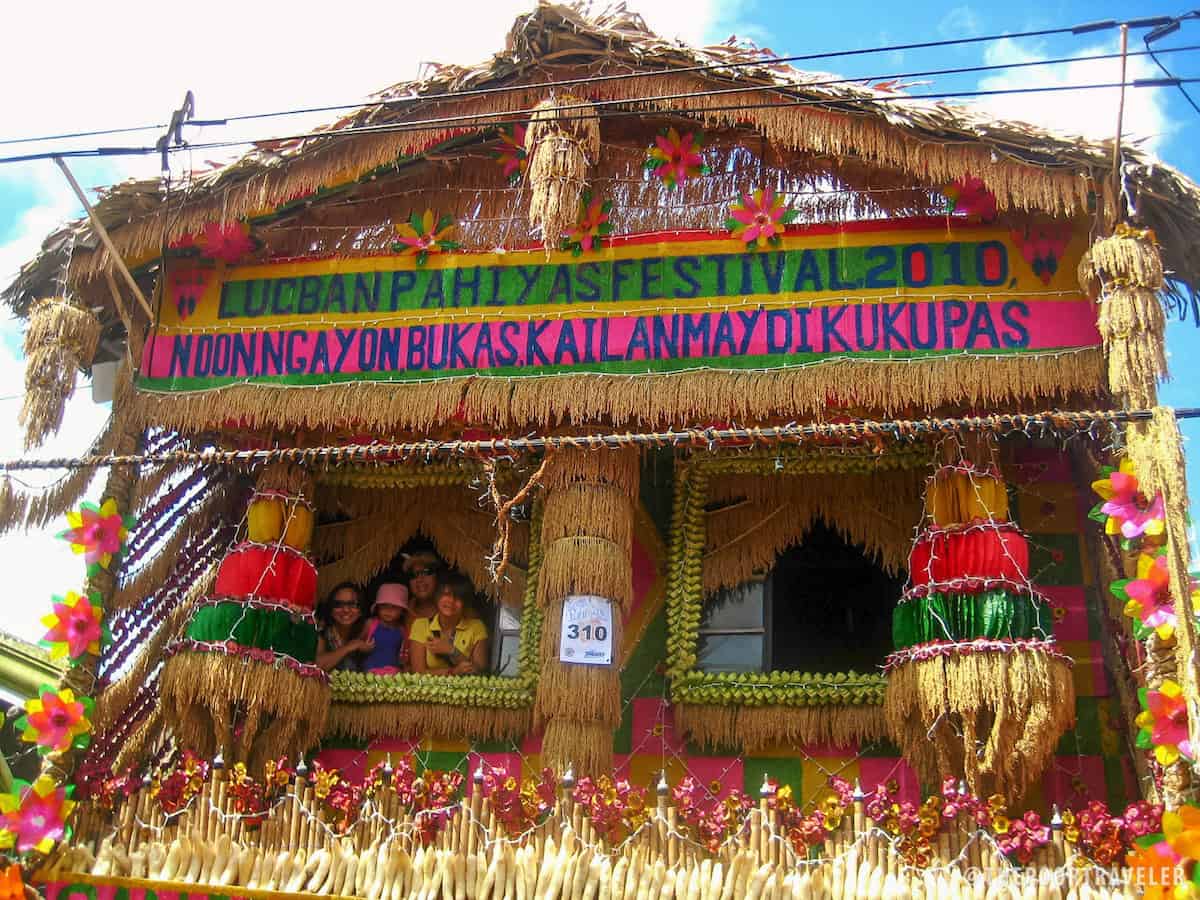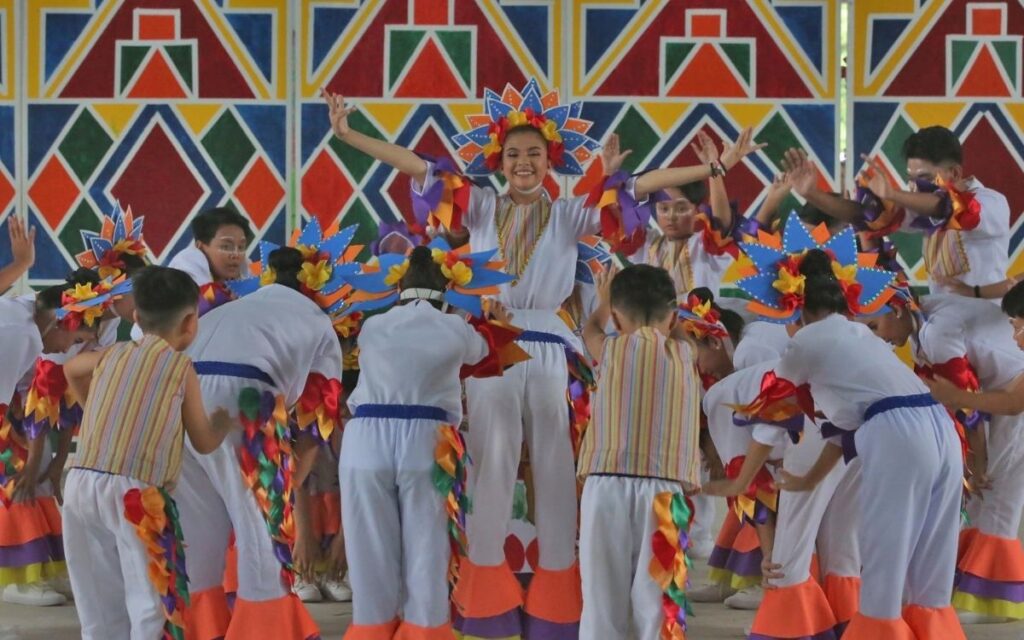| Pahiyas is one of the Philippines’ biggest and best harvest festivals, celebrated in honor of San Isidro Labrador, the patron saint of farmers, laborers, and peasants. The festival takes place in the town of Lucban in Quezon and attracts tourists from all over the country - and even people from other parts of the world! Pahiyas is also celebrated in the towns Tayabas and Sariaya, but the largest celebration is in Lucban.Harvest festivals are held in lots of different countries to give thanks for a successful harvest and the food that has been grown that year. Festivals take place across the Philippines during the harvest season, but Pahiyas is the most well-known of the festivals.Pahiyas began as a pagan festival, but over time it transformed into the colorful, exuberant spectacle that we know today. The festival as we know it began in 1963, founded by Fernando Cadeliña Nañawa, president of the Art Club of Lucban.The name of the festival comes from the word ‘payas’ meaning decorations. The locals will decorate their houses in the month running up to the festival. This comes from the 15th-century harvest tradition of displaying your successful harvests in the home. The priest would then visit every house in the village and bless each harvest.Now, the locals decorate their houses with produce, including fruits, vegetables, and kipings. Some people even make their own farmer dolls to include in the display. Then, a competition is held to decide who has the most colorful and beautiful decorations.The festival takes place each year on the 15th of May. Other Harvest festivals around the country take place throughout the month. |
 |
| As well as adorning their houses, the people of Lucban take part in a procession, complete with floats, bands, and performers in colorful costumes.There are also music stages and street food stalls set up for the guests. For many Filipinos, this vibrant, fun-filled event is the most exciting festival of the yearNow, the locals decorate their houses with produce, including fruits, vegetables, and kipings. Some people even make their own farmer dolls to include in the display. Then, a competition is held to decide who has the most colorful and beautiful decorations. The Philippines program was produced in collaboration with the Cultural Center of the Philippines and the Philippine Centennial Commission and was supported by the American International Group, Inc., The Starr Foundation, Bell Atlantic, the Asian Cultural Council, and the Philippine Centennial Foundation/USA. |









